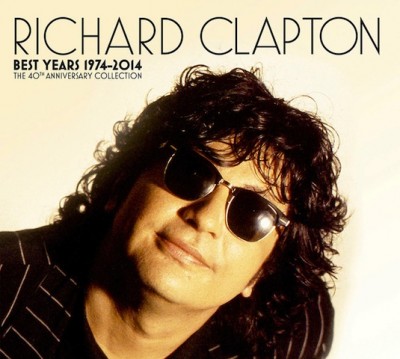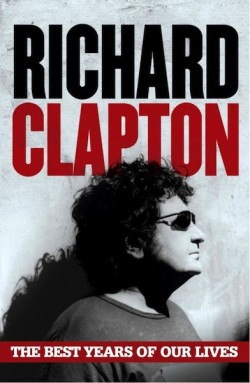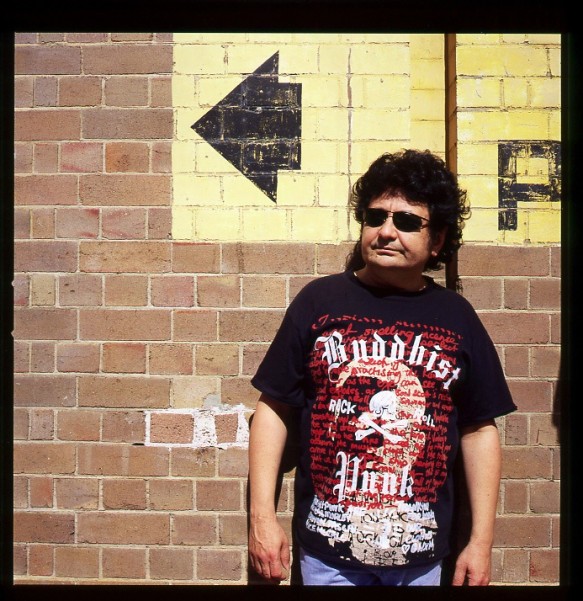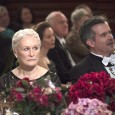Words and music.
Iconic Australian songwriter Richard Clapton has celebrated 40 years of writing and making music with the simultaneous release of his autobiography together with a three CD (plus DVD) set.
Iconic is a lazy word, overused in the relentless sales pitch that is post-war popular music but in Clapton’s case, it is entirely apt. His music has been as much a part of (and a reflection of) Australian life as Lou Reed’s or The Beach Boys have been to the American landscape or Ray Davies to the British. And it is this intertwining of his words and music with our births, deaths and marriages that un-lazys the word ‘iconic’ in his case.
The 50-track CD set – Best Years 1974-2014: The 40th Anniversary Collection – shows the consistency of his vision from the beginning. The tugging yearn of “Blue Bay Blues” (from 1975’s Girls on The Avenue LP) has much in common with “Vapour Trails” from 2012’s Harlequin Nights – an emotional directness, an almost country-perfect meld of words and melody, a crisp and beautifully realised production.
 What raises these songs – in fact, what raises all fifty of these songs and beyond into Clapton’s back-catalogue – is their deep humanity. No lyric cannot be understood and felt – whether poetic or everyday (the lines “Sitting out on the Palm Beach Road/I’m so drunk and the car won’t go” somehow mean so much) – no melody fails to serve the words, no chord fails to serve the song. Nor does any production trick rankle or obscure the deep effect on the heart of these tunes, which is triply remarkable since Clapton’s recordings have always taken production values from each of his four decades – to these ears, the best values. Yes, his music even survived the synthetic, gated textures of the ’80s.
What raises these songs – in fact, what raises all fifty of these songs and beyond into Clapton’s back-catalogue – is their deep humanity. No lyric cannot be understood and felt – whether poetic or everyday (the lines “Sitting out on the Palm Beach Road/I’m so drunk and the car won’t go” somehow mean so much) – no melody fails to serve the words, no chord fails to serve the song. Nor does any production trick rankle or obscure the deep effect on the heart of these tunes, which is triply remarkable since Clapton’s recordings have always taken production values from each of his four decades – to these ears, the best values. Yes, his music even survived the synthetic, gated textures of the ’80s.
Clapton’s voice of course is a big part of this. Always a little wounded-sounding, mellow or raw, its limits – like Dylan, like George Harrison – are its strengths. His is the voice of us, singing tunes that any of us can sing. (Check Jimmy Barnes’ grating howl on the live DVD reading of “I Am An Island” to see how easily that spell can be broken).
Another big part of Clapton’s songs is the feeling of place, always vivid and undilutedly Australian. Songs such as the triple crown of “Goodbye Tiger”, “Deep Water” and “Down in The Lucky Country” from 1977’s Goodbye Tiger seem to breathe with a salt-breeze off the Pacific and conjure brown-skinned girls, beach promenades, beer and humid Bondi nights. Remarkable that all three were written in a creative blue streak in a farmhouse in the freezing north of Denmark, Clapton snowed-in, in more than one sense, self-exiled from Australia.
It seems he took an ever glowing ember of Australia (or maybe a handful of warm Pacific sand), in his heart with him wherever he went. And went he did, and went and went – his autobiography, The Best Years of Our Lives– charts his pin-balling travels from Australia to Britain, from Germany (and all over Europe) to the US and back again. A geographical manifestation of Clapton’s truly restless creative spirit – one of many parallels to Neil Young who also rocks like fury yet writes clear-water ballads, and never ever stands still – his travels were as much driven by disaffection with Australia, his homeland, as they were by beckoning global fame.
Toby Cresswell in his liner notes to the CD set refers to his early impression of Richard Clapton as “a man on a mission of becoming”. The book maps this trajectory in great detail. Yes, there are the salacious titillations of parties, glamour, INXS, drug fun and boozy swashbuckling. Yet there is the impression of Clapton as an artist always just a little on the outer, looking in on it all – not judging or voyeuristically but with affectionate observation, loading his palette and his brush with the hues and tints of beloved, fast-paced Life.
The book also gives the impression of a man to whom the music was all. There is nothing of his childhood or early teenage years (beyond pale mention of boarding school and a distanced family), nor of his more recent divorce and its associated pain, which ironically fuelled Harlequin Night’s sweetest moments. The book starts when music starts for Clapton and you gather this is when life started for him too.
 The partying also stops when there is work to be done. Clapton as ‘headmaster’ while producing the second INXS album, 1981’s Underneath The Colours. Clapton working through the night to get things just right. The exceptional musicians he used on his albums – such as Kirk Lorange and Cold Chisel’s (often uncredited) Ian Moss – shows the value he put on the final work. Throughout his life we see Clapton bail out when the music seems to take second place to the satyricon.
The partying also stops when there is work to be done. Clapton as ‘headmaster’ while producing the second INXS album, 1981’s Underneath The Colours. Clapton working through the night to get things just right. The exceptional musicians he used on his albums – such as Kirk Lorange and Cold Chisel’s (often uncredited) Ian Moss – shows the value he put on the final work. Throughout his life we see Clapton bail out when the music seems to take second place to the satyricon.
Words and music. Please read the book, and listen to the music – take it all and enjoy it all. But leave the DVD till last.
The Best Years of Our Lives was recorded (for a live album) and filmed before a small invited audience at an Artarmon sound stage on 16 April 1989. It was a relatively drug-free event. Hardly a recipe for rock’n’roll fireworks. It was a retrospective of Clapton’s work over the years and featured a rotating band of musicians from his various past projects such as Venetta Fields, Jimmy Barnes, INXS’s Jon Farris and Garry Gary Beers and the unknown Ben Butler (who bloody well shines on lead guitar). Despite the strong material, it could have been a self-conscious damp squib.
It is a triumph: the songs seem to galvanise the players and Clapton’s obvious delight pushes the band into some white-hot areas. It is really what live music is all about – and Richard Clapton, that denizen of the all-night studio, shows his live chops in all their tooth and fang glory. (I saw him a couple of years back at Byron Bay Bluesfest and he thrilled the shit out of me there, too).
The DVD finishes with the song “The Best Years of Our Lives” performed only by Clapton with spare piano backing. This song of universal hope and love of this gift that is life is hugely affecting in its full band setting. But done in simple duo like this, by its songwriter many years on, it takes on a sweet nostalgia that every one of us will always be able to relate to, and cherish.
As Clapton sings, we keep waiting for the band to come in – heralded by a thunderous drum fill – to take it up to the anthemic place which awaits these words, this melody. But it never does. Bruce Springsteen would have taken it up there but Richard Clapton leaves it down here, amongst us.
After all, it is where the song – where all his songs – live.
To see it, read it, visit Richard Clapton’s website.




